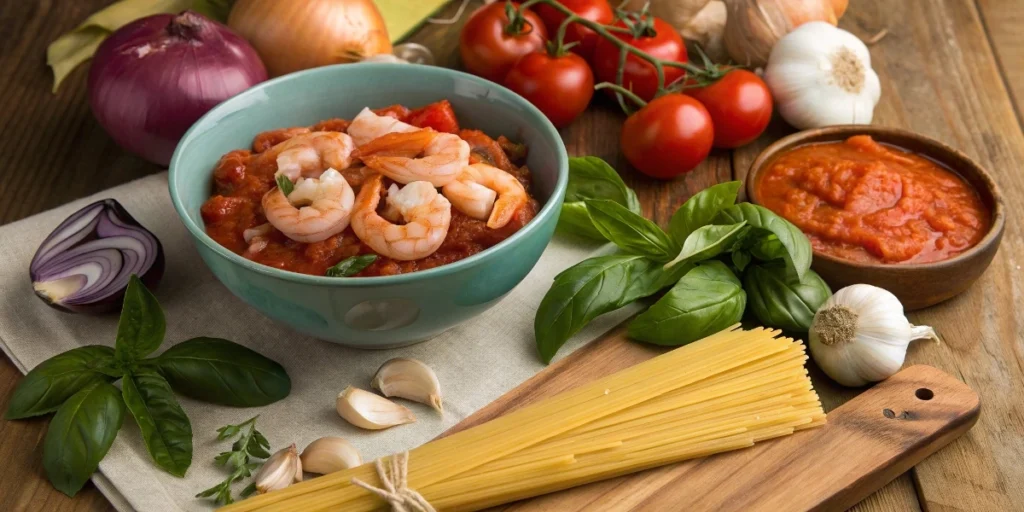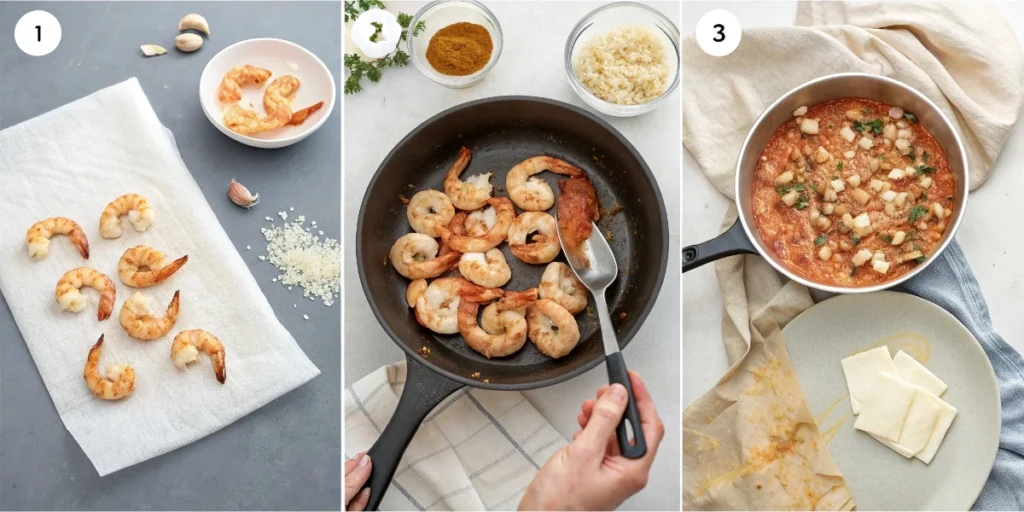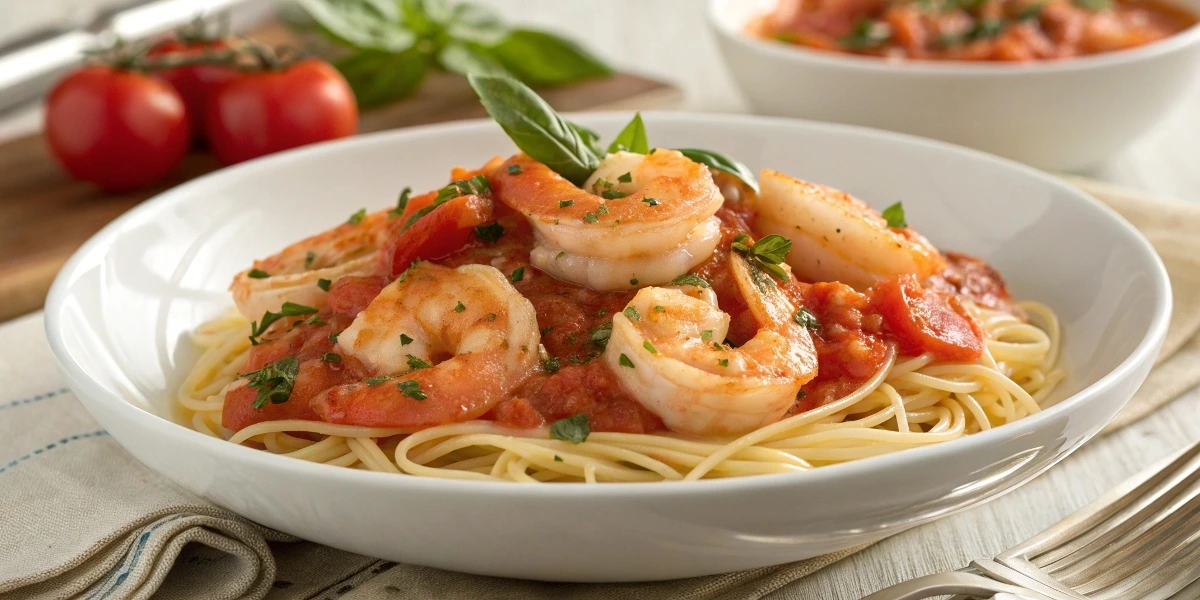Are you tired of the same old pasta sauces and looking for something that combines rich flavors with a hint of seafood goodness? Have you ever considered trying shrimp ragu? If not, you’re in for a treat! Shrimp ragu is an exciting twist on the traditional ragu, infusing tender shrimp with a savory tomato-based sauce that’s perfect for pasta, rice, or even as a standalone dish. Let’s dive into why this dish is so special and how you can easily make it at home.
Table of Contents
What Makes Shrimp Ragu Special?
When most people think of ragu, they picture slow-cooked beef or pork with a rich, hearty sauce. However, shrimp ragu offers a lighter yet equally satisfying alternative. This dish brings together the delicate sweetness of shrimp with a savory tomato sauce, flavored with garlic, herbs, and a splash of wine for added depth. Whether you’re cooking for a family dinner or impressing guests at a gathering, shrimp ragu is versatile and flavorful enough to become a new favorite.
Time and Difficulty
- Preparation time: 10 minutes
- Cooking time: 20 minutes
- Difficulty: Easy to moderate
The best part? Shrimp ragu is quick to prepare and doesn’t require hours of cooking like some traditional ragus. The shrimp cook in just minutes, and the sauce comes together in no time, making this a go-to recipe for busy weeknights or a weekend treat.
Essential Ingredients for Shrimp Ragu
To make shrimp ragu, you’ll need a few key ingredients. These ingredients not only build the flavor but also make this dish quick and easy to prepare.

Main Ingredients:
- Shrimp: Fresh or frozen shrimp works well for this recipe. Choose large or medium-sized shrimp for the best texture. Shrimp adds a sweet, briny flavor that perfectly complements the rich tomato sauce.
- Olive oil: A generous drizzle of olive oil helps cook the shrimp and form the base for the sauce. Olive oil adds a subtle flavor to the dish.
- Garlic: A key player in many Italian-inspired dishes, garlic enhances the ragu with its fragrant aroma and savory depth.
- Tomatoes: Canned crushed tomatoes or fresh tomatoes are essential for creating the tomato sauce. Crushed tomatoes create a smooth, rich base for the ragu.
- Herbs: Fresh or dried basil and oregano are typically used in this dish to add a pop of freshness and depth of flavor.
- White wine: A splash of dry white wine deglazes the pan and adds richness and complexity to the sauce. If you prefer not to cook with wine, you can substitute with chicken broth.
- Red pepper flakes: A pinch of red pepper flakes adds a touch of heat, balancing the sweetness of the shrimp and tomatoes. You can skip this if you prefer a milder flavor.
- Salt and pepper: Season to taste with salt and freshly cracked black pepper to enhance all the flavors.
Ingredient Alternatives:
- Shrimp alternatives: If you’re not a fan of shrimp, you can use scallops, lobster, or even chicken for a non-seafood version.
- Wine alternatives: If you prefer not to use wine, chicken broth or vegetable broth can provide the necessary liquid and flavor. A squeeze of lemon juice can also add acidity.
- Herb alternatives: If basil and oregano aren’t available, thyme or rosemary can work well in this dish.
Step-by-Step Instructions: How to Make Shrimp Ragu?
Creating shrimp ragu is straightforward and comes together in just a few simple steps. Follow these easy directions to make your own delicious ragu at home.
1. Prep the Shrimp
- Start by peeling and deveining the shrimp, removing the shells and tails.
- Pat the shrimp dry with a paper towel to help them sear better when cooking.
2. Cook the Shrimp
- Heat 1-2 tablespoons of olive oil in a large pan over medium-high heat.
- Add the shrimp to the pan in a single layer. Cook for about 1-2 minutes per side, or until they turn pink and opaque.
- Remove the shrimp from the pan and set them aside. This helps keep the shrimp tender.

3. Prepare the Sauce Base
- In the same pan, add another tablespoon of olive oil if needed.
- Add 2-3 cloves of minced garlic to the pan, stirring until fragrant (about 30 seconds).
- Pour in 1/2 cup of white wine to deglaze the pan, scraping up any bits stuck to the bottom for extra flavor.
- Add 1 can (about 14 ounces) of crushed tomatoes and stir to combine.
- Season with 1 teaspoon of dried oregano, 1 teaspoon of dried basil, and a pinch of red pepper flakes (if using).
4. Simmer the Sauce
- Let the sauce simmer for about 10 minutes, allowing the flavors to meld together and the sauce to thicken slightly.
- Stir occasionally to prevent burning, and adjust the seasoning with salt and pepper to taste.
5. Return the Shrimp to the Pan
- Add the cooked shrimp back into the pan with the sauce, stirring gently to coat the shrimp in the sauce.
- Let the shrimp simmer in the sauce for an additional 2-3 minutes until fully cooked through.
6. Finish and Serve
- Once the shrimp are cooked through, remove the pan from heat.
- Garnish with freshly chopped basil or parsley for a pop of color and freshness.
- Serve the shrimp ragu over your favorite pasta, rice, or enjoy it on its own with a slice of crusty bread to soak up the sauce.
Assembly: Building Your Shrimp Ragu Dish
To really elevate the presentation of your shrimp ragu, consider the following tips:
- Serve over pasta: Shrimp ragu pairs beautifully with pasta, especially linguine, spaghetti, or fettuccine. The sauce clings to the noodles, creating a perfect bite every time.
- Pair with rice: For a low-carb alternative, serve shrimp ragu over cauliflower rice or regular rice. The sauce adds flavor without overwhelming the delicate shrimp.
- Presentation tips: Garnish with fresh herbs, a sprinkle of grated Parmesan, or a squeeze of fresh lemon juice for added brightness. A drizzle of olive oil can also enhance the dish’s visual appeal.
Storage and Make-Ahead Tips for Shrimp Ragu
If you have leftovers or want to make the shrimp ragu ahead of time, here’s how to store and reheat it properly:
Storing:
- Allow the shrimp ragu to cool to room temperature before storing it.
- Transfer the ragu to an airtight container and store it in the refrigerator for up to 2 days.
Reheating:
- To reheat, place the ragu in a pan over low heat and stir occasionally. If the sauce has thickened too much, add a splash of broth or water to loosen it up.
- You can also reheat the shrimp ragu in the microwave, stirring halfway through for even heating.
Recipe Variations for Shrimp Ragu
Looking to mix things up a bit? Here are some creative variations of shrimp ragu to try:
- Shrimp and Lobster Ragu: Add some lobster meat to the sauce for a luxurious twist.
- Spicy Shrimp Ragu: For a heat-packed version, increase the amount of red pepper flakes or add some sliced fresh chili peppers to the sauce.
- Shrimp and Spinach Ragu: Add a handful of fresh spinach at the end of cooking for extra nutrients and color.
- Coconut Shrimp Ragu: For a tropical twist, replace the crushed tomatoes with a can of coconut milk, and add lime zest for brightness.
Conclusion: Enjoy the Best Shrimp Ragu Ever
Shrimp ragu is a delicious, quick-to-make dish that brings together the sweetness of shrimp and the richness of a savory tomato sauce. Whether you’re serving it over pasta, rice, or on its own, this dish is sure to impress. Don’t hesitate to experiment with the variations and make it your own. The best part? It’s simple, healthy, and perfect for any occasion.
FAQs about Shrimp Ragu
What makes shrimp ragu different from regular ragu?
- Shrimp ragu uses shrimp as the main protein, offering a lighter, seafood-based twist on the traditional meat ragu. The flavors are still rich but with a fresher taste.
Can I use frozen shrimp for this recipe?
- Yes! Frozen shrimp work perfectly. Just make sure to thaw them before cooking.
Can shrimp ragu be made ahead of time?
- Yes, you can make the sauce ahead and store it in the fridge for up to 2 days. Add the shrimp just before serving to keep them tender.
Is shrimp ragu healthy?
- Shrimp ragu is a great source of protein and is relatively low in calories, especially when paired with vegetables or a light side like pasta or rice. You can also modify the recipe to make it even healthier by using zucchini noodles or cauliflower rice.
Can I freeze shrimp ragu?
- It’s not recommended to freeze shrimp ragu because shrimp can become rubbery when frozen and reheated. However, the sauce can be frozen, and you can cook fresh shrimp when you’re ready to serve.

